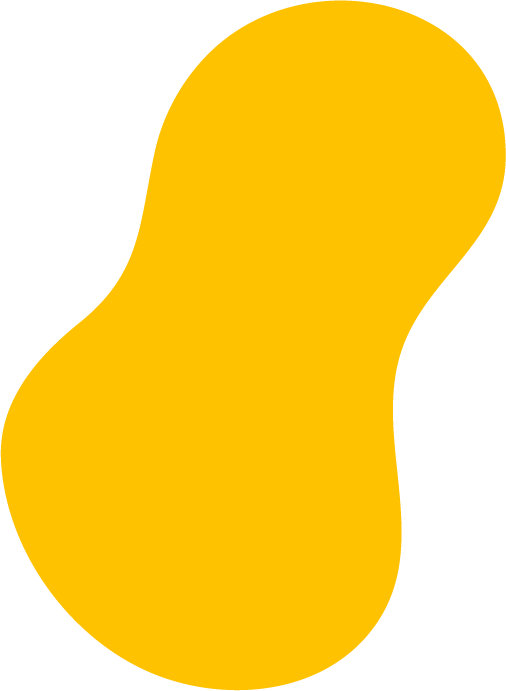Cerebral Palsy Child Page


Do You Have a
Cerebral Palsy Case?
If a child’s cerebral palsy was caused by a birth injury, their family may be eligible for compensation to cover care, treatment, assistive technology, and other important resources. Unfortunately, a number of families avoid medical malpractice litigation for different reasons—some fear confrontation, some feel they don’t have the financial resources, some simply feel overwhelmed, and others doubt they have a case. The best—and only—way to find out if you have a cerebral palsy case is to reach out to an attorney for a legal consultation. An experienced cerebral palsy attorney will do a thorough investigation of the medical records and review the case with expert medical professionals to determine whether negligent care was the cause of a child’s cerebral palsy. These case evaluations are free of charge. For that matter, if you pursue a case with ABC Law Centers: Birth Injury Lawyers, you pay nothing throughout the entire legal process unless we win. Reach out today to learn more.
Featured Videos
Posterior Position
Hypoxic-Ischemic Encephalopathy (HIE)

Featured Testimonial
What Our
Clients Say…
After the traumatic birth of my son, I was left confused, afraid, and seeking answers. We needed someone we could trust and depend on. ABC Law Centers: Birth Injury Lawyers was just that.
- Michael
Helpful resources
- Cerebral Palsy (CP). (2018, March 09). Retrieved September 20, 2018, from https://www.cdc.gov/ncbddd/cp/data.html
- Nordqvist, C. (2017, February 21). Cerebral palsy: Symptoms, causes, and treatments. Retrieved September 20, 2018, from https://www.medicalnewstoday.com/articles/152712.php
- Cerebral Palsy: Hope Through Research. (n.d.). Retrieved September 20, 2018, from https://www.ninds.nih.gov/Disorders/Patient-Caregiver-Education/Hope-Through-Research/Cerebral-Palsy-Hope-Through-Research#3104_2
- Cerebral Palsy (CP). (2018, April 18). Retrieved September 20, 2018, from https://www.cdc.gov/ncbddd/cp/facts.html
- Tilton, A. H. (2004, March). Management of spasticity in children with cerebral palsy. In Seminars in Pediatric neurology (Vol. 11, No. 1, pp. 58-65). WB Saunders.
- Abdelaziz, T. H., Elbeshry, S. S., Mahran, M., & Aly, A. S. (2017). Flexion deformities of the wrist and fingers in spastic cerebral palsy: A protocol of management. Indian journal of orthopaedics, 51(6), 704.
- Cloake, T., & Gardner, A. (2016). The management of scoliosis in children with cerebral palsy: a review. Journal of Spine Surgery, 2(4), 299.
- Children’s Hospital. (2014, May 05). Cerebral Palsy Hip Disorders. Retrieved September 20, 2018, from https://www.chop.edu/conditions-diseases/cerebral-palsy-hip-disorders
- Ataxia: Causes, Symptoms and Diagnosis. (n.d.). Retrieved September 20, 2018, from https://www.healthline.com/symptom/ataxia
- Cerebral Palsy: Causes, Treatment and Prevention. (2016, May 18). Retrieved September 20, 2018, from http://americanpregnancy.org/birth-defects/cerebral-palsy/
- (n.d.). Retrieved September 20, 2018, from https://www.uptodate.com/contents/cerebral-palsy-clinical-features-and-classification?search=cerebral palsy&source=search_result&selectedTitle=1~150&usage_type=default&display_rank=1
- Cerebral Palsy Research Foundation. (n.d.). Ataxic Cerebral Palsy (Ataxia) | Cerebral Palsy Research Foundation – USA. Retrieved September 20, 2018, from https://cparf.org/what-is-cerebral-palsy/types-of-cerebral-palsy/ataxic-cerebral-palsy-ataxia/
- Lundy, C., Lumsden, D., & Fairhurst, C. (2009). Treating complex movement disorders in children with cerebral palsy. The Ulster medical journal, 78(3), 157.
- Aravamuthan, B. R., & Waugh, J. L. (2016). Localization of basal ganglia and thalamic damage in dyskinetic cerebral palsy. Pediatric neurology, 54, 11-21.
- Hou, M., Zhao, J. H., & Yu, R. (2006). Recent advances in dyskinetic cerebral palsy. World J Pediatr, 1, 23-28.
- Cerebral Palsy Alliance Research Foundation. (n.d.). Dyskinetic Cerebral Palsy. Retrieved September 20, 2018, from https://research.cerebralpalsy.org.au/what-is-cerebral-palsy/types-of-cerebral-palsy/dyskinetic-cerebral-palsy/
- Types of Cerebral Palsy. (n.d.). Retrieved September 20, 2018, from https://www.umcvc.org/health-library/aa55637
- Types of CP. (n.d.). Retrieved September 20, 2018, from https://www.uclahealth.org/medical-services/pediatric-orthopaedics/cerebral-palsy/what-cp/types-cp
- Pentaplegic cerebral palsy (Concept Id: C3838782) – MedGen – NCBI. (n.d.). Retrieved September 20, 2018, from https://www.ncbi.nlm.nih.gov/medgen/824628
- Palisano, R., Rosenbaum, P., Bartlett, D., & Livingston, M. (2007). Gross motor function classification system expanded and revised (gmfcs-e & r). CanChild Center for Childhood Disability Research, McMaster University.
- Ohrwall, A., Wahlstrom, U., & Persson-Annersten, A. (2018). Mini-Manual Ability Classification System for children with cerebral palsy 1 – 4 years of age[PDF].
- Hidecker, M. J. C., Kent, R., Paneth, N., Rosenbaum, P., Eulenberg, J. B., Fisk, J., … & Jones, R. S. (2007). Communication function classification system (CFCS) for individuals with cerebral palsy. In Conference session presented at the annual conference of the American Speech-Language-Hearing Association, Boston, MA.
- Nelson, K. B., & Ellenberg, J. H. (1979). Neonatal signs as predictors of cerebral palsy. Pediatrics, 64(2), 225-232.
- McIntyre, S., Badawi, N., Brown, C., & Blair, E. (2011). Population, case-control study of cerebral palsy: neonatal predictors for low-risk term singletons. Pediatrics, peds-2010.
- Cerebral Palsy Alliance Research Foundation. (n.d.). How does cerebral palsy affect people? Retrieved September 20, 2018, from https://research.cerebralpalsy.org.au/what-is-cerebral-palsy/how-cerebral-palsy-affects-people/
- Cloake, T., & Gardner, A. (2016). The management of scoliosis in children with cerebral palsy: a review. Journal of Spine Surgery, 2(4), 299.
- Dutt, R., Roduta-Roberts, M., & Brown, C. A. (2015). Sleep and children with cerebral palsy: a review of current evidence and environmental non-pharmacological interventions. Children, 2(1), 78-88.
- Granild‐Jensen, J. B., Rackauskaite, G., Flachs, E. M., & Uldall, P. (2015). Predictors for early diagnosis of cerebral palsy from national registry data. Developmental Medicine & Child Neurology, 57(10), 931-935.
- What is AT? (n.d.). Retrieved October 18, 2019, from https://www.atia.org/at-resources/what-is-at/.
- Kent, A. (2008). Magnesium Sulphate and Cerebral Palsy. Reviews in Obstetrics and Gynecology, 1(4), 205.
- O’Shea, T. M., Jacks, K. E., Klinepeter, K. L., Peters, N. J., & Dillard, R. G. (1999). Antenatal Betamethasone and the Risk of Cerebral Palsy (CP) in Very Low Birth Weight (VLBW) Neonates. Pediatric Research, 45(4, Part 2 of 2), 252A.


